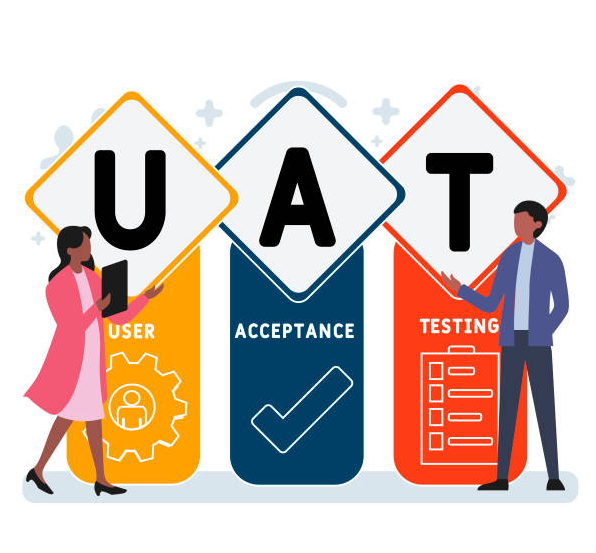
Every software developer wants to make his brainchild fall in love with customers and fully satisfy their expectations and requirements. This is essential for explosive sales and skillful bypassing of competitors. Moreover, it is pretty hard to determine the quality and usability of the developed product by eye, so acceptance testing, or UAT testing, comes to the rescue. What is UAT testing, and what sorts of problems does it solve – let’s figure it out in this article.
What is UAT testing?
UAT testing performs multiple functions at the same time. Its primary task is to study the service in detail and check its functionality and effectiveness. This task is usually performed by a team whose responsibility is to pay attention to the product’s usability.
As part of the procedure, it is necessary to determine how the service actually works in conditions close to real, and whether the programmers are satisfied with the results. They also need to understand whether all the required functions are implemented or something is still missing. They also need to check for errors that can prevent a person from
Using the product.
UAT testing is a mandatory stage of project creation. If such tests have not been performed, the product cannot be shown to the target audience. There is no point in beginning advertising campaigns and starting sales without performing this testing. There will be no guarantee that the project will begin successfully, will entirely meet the manufacturer’s idea, and meet the necessary quality indicators.
Test types
Software testing has several types, and each has its own characteristics.
Types:
Alpha and beta testing: Alpha testing is the initial stage, during which, instead of real users, the service is comprehensively tested by employees and other users who have a direct connection with the project. Beta testing is usually considered the second step, and potential customers are invited to complete it. For example, game developers can invite gamers to test an upcoming game personally.
Contract acceptance testing: This testing allows you to understand whether the agreement’s requirements drawn between the participants have been entirely met. Usually, this procedure is required while working with an outsourced development team. The customer must ensure that the contractor has managed to fulfill all the necessary tasks and objectives.
Legislative testing: The primary purpose of this testing is to ensure that no laws have been broken. It is necessary for the product to meet the standards defined for a particular industry. Usually, verification is needed for projects in the financial and health sectors.
Operational testing: This testing allows businesses to evaluate the effectiveness of the process that the client does not see since they occur inside the organization. It allows us to analyze data collection, check security systems, and other essential points.
Each type of UAT testing is important in its own way, and many services go through each stage. User acceptance testing allows you to understand whether something needs to be changed and improved.
About the Company:
Opkey is a no-code continuous test automation platform that is easy to use and built for change. With the help of automated processes and testing, Opkey empowers businesses to keep pace with release schedules, reduce risk and ensure business continuity.







